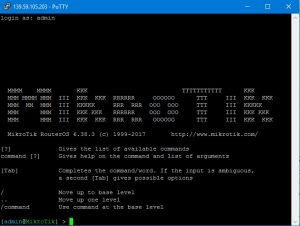

The next step is to extract the image and write it to the virtual machine disk:ĭd if=chr-6.39.3.img of=/dev/vda bs=4M oflag=syncĪfter rebooting, Mikrotik RouterOS will prepare the hard drive automatically and you will see a login prompt. Now follow the link and download the "Cloud Hosted Router" raw image.

For this you can allocate what’s left of your storage. Use scp or any other comparable tool as that will use SSH for the upload and it does not require any additional configuration. Then you have to manually upload the CHR disk (in qcow format) on the ProxMox host. You can label the first Installer and allocate 200MB to it, and the second Boot. Create a new guest with the system disk and other devices as required. Create a new linode (that’s what VMs are called) on Linode.Note most of the info here was distilled from this link.

Let’s get started…seriously this time :). There’s some limitation to the downloaded version, but you can unlock the full capability by getting a license. Available on the download site in various formats, you can install in 5 mins on your VirtualBox, VMWare, KVM VMs. Technical tutorials, Q&A, events This is an inclusive place where developers can find or lend support and discover new ways to contribute to the community. So a few years ago, Miktotik fulfilled the desires of the cloud-bound network admin by releasing the Cloud Hosted Router.

Mikrotik is a versatile and affordable networking hardware and software vendor – hugely popular in Nigeria, and I’ve been tinkering, deploying, developing off of RouterOS’ API and everything in-between. This is more a scratchpad for my personal reference, and as nothing every really remains static in tech, don’t hesitate to point out any stale information you may find…so let’s get started. It’s just convenient hosting and that frees me from 99 problems I have to deal with. So, I’ve been using linode for most of my hosting these days – since I retired (in the process of selling) my HP ML110 server.


 0 kommentar(er)
0 kommentar(er)
